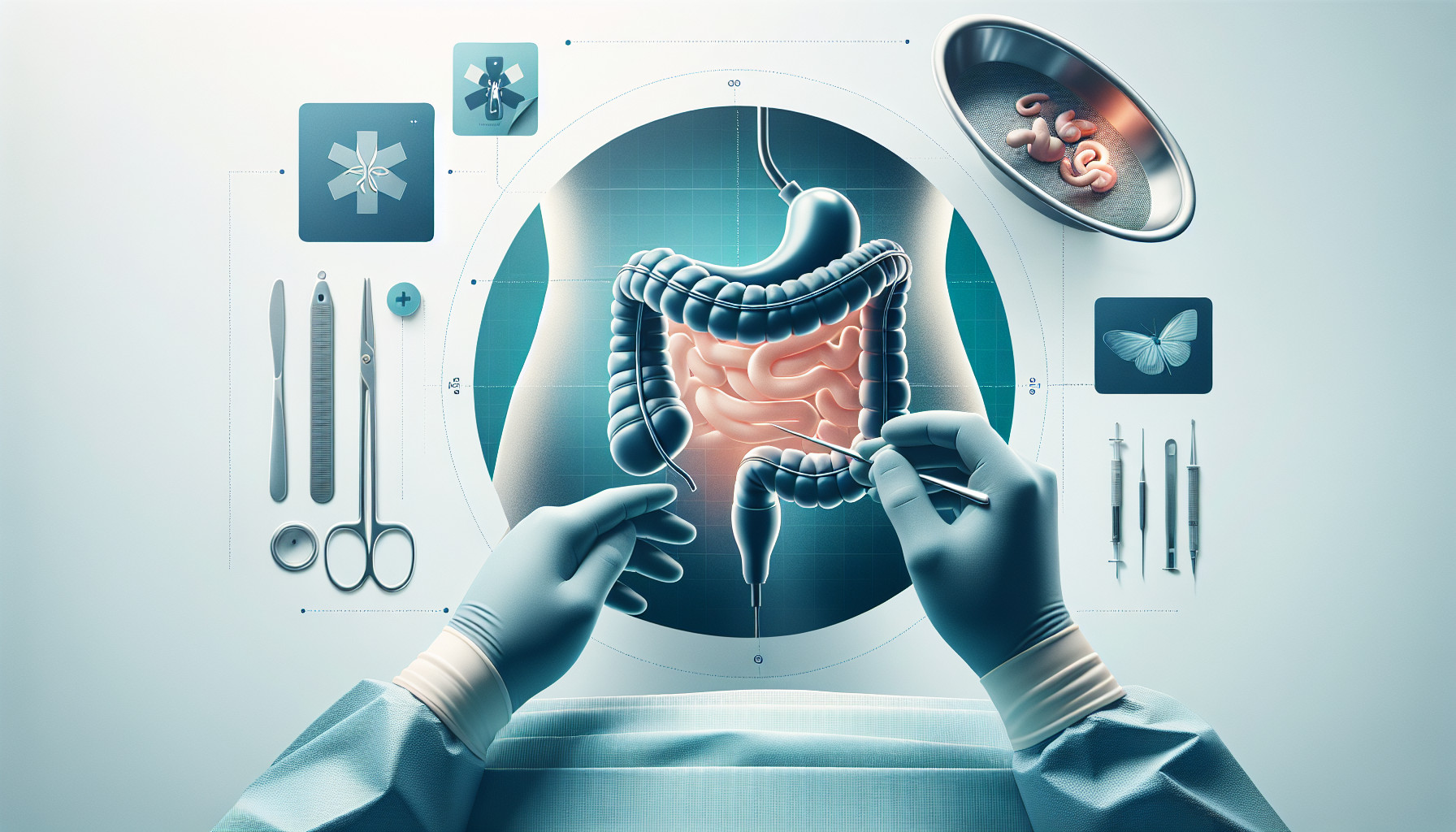Our Summary
This research paper discusses two different surgical procedures used to treat colon cancer. The standard approach is a colectomy (colon removal) and a procedure known as a D2 Lymphadenectomy, which involves removing some lymph nodes. The alternative, more extensive approach is a procedure called Complete Mesocolic Excision (CME) coupled with a D3 Lymphadenectomy, which involves removing more lymph nodes. There is ongoing debate about whether the more extensive surgery has long-term benefits over the standard one.
The researchers conducted a detailed review of existing studies comparing these two types of surgeries. They analyzed studies involving over 21,000 patients who had colon cancer surgery, half of whom underwent the more extensive procedure.
The results showed no significant difference in complications or deaths shortly after surgery between the two groups. However, patients who underwent the more extensive surgery had better survival rates over a five-year period. This is the first extensive review to show that the Complete Mesocolic Excision with D3 Lymphadenectomy has better long-term survival outcomes than the standard surgical approach.
FAQs
- What are the two different surgical procedures discussed in the research paper for treating colon cancer?
- Did the research find any significant difference in complications or deaths shortly after surgery between the two procedures?
- Which surgical procedure has shown better long-term survival outcomes according to the review?
Doctor’s Tip
A helpful tip a doctor might tell a patient about colectomy is to follow a healthy diet and exercise regularly to promote healing and prevent complications after surgery. It is also important to attend follow-up appointments with your healthcare provider to monitor your recovery and address any concerns or symptoms that may arise.
Suitable For
Patients who are typically recommended colectomy include those with colon cancer, inflammatory bowel disease (such as ulcerative colitis or Crohn’s disease), familial adenomatous polyposis (FAP), colorectal polyps, or severe diverticulitis. In some cases, colectomy may also be recommended for patients with severe constipation or bowel obstruction that does not respond to other treatments.
Patients who have a high risk of developing colon cancer, such as those with a family history of the disease or genetic mutations that increase the risk, may also be recommended colectomy as a preventive measure. Additionally, patients with advanced colorectal cancer that has spread to nearby organs or lymph nodes may require colectomy as part of their treatment plan.
Overall, the decision to recommend colectomy is based on the individual patient’s medical history, the stage and location of their colon disease, and their overall health and ability to tolerate surgery. It is important for patients to discuss the risks and benefits of colectomy with their healthcare provider to determine the best treatment approach for their specific condition.
Timeline
Timeline of patient experience before and after colectomy:
Before surgery:
- Patient is diagnosed with colon cancer and undergoes various tests to determine the extent of the cancer.
- Patient meets with a surgeon to discuss treatment options, including the possibility of a colectomy.
- Patient undergoes pre-operative preparation, which may include bowel prep and other tests.
- Patient may meet with an anesthesiologist to discuss anesthesia options and potential risks.
During surgery:
- Patient undergoes colectomy, which involves removing the diseased portion of the colon.
- In some cases, lymph nodes are also removed to prevent the spread of cancer.
- The surgery typically lasts several hours, and the patient is under general anesthesia.
After surgery:
- Patient wakes up in the recovery room and is closely monitored for any complications.
- Patient may experience pain and discomfort at the incision site.
- Patient is gradually introduced to a liquid diet and then advanced to solid foods.
- Patient may need to stay in the hospital for a few days to a week, depending on their recovery.
- Patient is discharged from the hospital with instructions for at-home care, including wound care and pain management.
- Patient may need to follow up with their surgeon for post-operative appointments and monitoring.
- Patient may need to undergo chemotherapy or other treatments as part of their cancer treatment plan.
Overall, the recovery process after colectomy can vary depending on the individual patient and the extent of the surgery. It is important for patients to closely follow their healthcare team’s instructions and attend follow-up appointments to ensure a smooth recovery and long-term success.
What to Ask Your Doctor
What are the risks and benefits of undergoing a colectomy compared to other treatment options for colon cancer?
What is the difference between a standard colectomy and a Complete Mesocolic Excision with D3 Lymphadenectomy?
How will my recovery time differ between the standard colectomy and the more extensive surgery?
What are the potential long-term effects or complications of each type of surgery?
How will the decision between a standard colectomy and a more extensive surgery impact my quality of life after treatment?
What factors should I consider when deciding between the standard colectomy and the more extensive surgery?
Are there any specific criteria or guidelines that determine whether a patient is a good candidate for a more extensive surgery like a Complete Mesocolic Excision with D3 Lymphadenectomy?
How many lymph nodes will be removed during each type of surgery, and how does this impact my prognosis?
What is the success rate of each type of surgery in terms of removing all cancerous tissue and preventing recurrence?
Are there any ongoing clinical trials or research studies investigating the long-term outcomes of different surgical approaches for colon cancer that I should be aware of?
Reference
Authors: Ow ZGW, Sim W, Nistala KRY, Ng CH, Koh FH, Wong NW, Foo FJ, Tan KK, Chong CS. Journal: Eur J Surg Oncol. 2021 Apr;47(4):732-737. doi: 10.1016/j.ejso.2020.09.007. Epub 2020 Sep 12. PMID: 32951936
